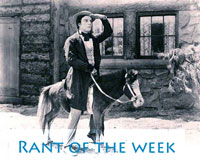This is one of those songs I vaguely remember as part of the aural wallpaper of the rooms of my youth. Nowadays, you would hear a song that you like as much as I liked this and immediately go home and download it. Well, no– you would just immediately download it onto your iPhone or whatever.
I probably hadn’t heard it in 30 years when I suddenly remembered it. Actually, it’s the name of a recent column by Maureen Dowd in the New York Times. And I remembered part of the song: “and if I tried, I know she’d say I lied” then something something then “… don’t hurt her, you fool”.
So I went to Youtube and there it was. And I was frankly astonished at the harmonies.
Even more astonishing in this video: they are actually playing and singing! Live!
The lyrics, for an early 60’s pop song, are surprisingly allusive:
Talking is cheap, people follow like sheep.
Even though there is no where to go.
How could she tell he deceived her so well?
Pity she’ll be the last one to know!
But it’s the vocal arrangement that is… well, really quite stunning, with the harmonies:
How many times will she fall for his lines
Should I tell her or should I be cool?
And if I tried I know she’d say I lied.
Mind your business don’t hurt her you fool!
The solo falsetto voice insinuates itself into your mind, like a distant conscience, only to be hammered into full awareness by the choral harmonies, and then that wonderful, sliding, “or should I be cooooool”.
The real live Tremeloes. This is a rarity. Most video performances from this era– and most eras– are lip-synched to a studio recording. If you care as much about the issue as I do, this is a fabulous treat, a real performance.
The girl at 0:59 looks to me like she’s not into her dance partner: she’s scanning the floor for someone she really wants to dance with.
At 1:32 some genuine feedback, affirming that this is a live performance!
The falsetto, if you’re wondering, appears to be coming from the singer in the middle.
This was also performed by Frankie Valli with our without the Four Seasons.
Incidentally, the advertising on YOUTUBE is getting to be extremely annoying. Extremely.
The Four Seasons released “Silence is Golden” as the “B” side to “Rag Doll” in 1964. Inexplicably, it never caught on, and the Tremeloes smartly picked it up in 1967.
The Tremeloes had been known as “Brian Poole and the Tremoloes” (a newspaper misspelled the name) until 1966 when Poole left. He did them a favor: without a “lead” singer, all of the members of the band stepped up, and, it turns out, all of them could sing very well. “Silence is Golden” sounds like it: nobody has the diva role.
A faster version has been recorded by “The Square Set” (1967) in South Africa.


